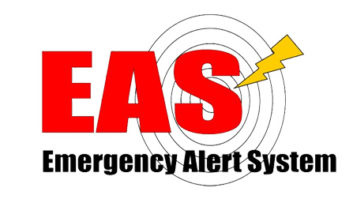WASHINGTON — Two minutes prior to Wednesday’s national test of the Emergency Alert System test at 2:20 p.m. (EDT), the Federal Emergency Management Agency will also initiate the first national test of the Wireless Emergency Alert system. The WEA portion of the test, which will be sent to consumer cellphones, will begin at 2:18 p.m. (EDT).
Both test messages will be transmitted over FEMA’s Integrated Public Alert and Warning System and both messages will state that these communications are only tests.
As the nation preps for this fourth national test of the EAS, the head of the Public Safety and Homeland Security Bureau at the Federal Communications Commission pointed to the importance of WEA in the nation’s emergency preparedness efforts in an Oct. 2 blog post.
While participating wireless providers are already required to support monthly WEA tests to check their network connections to the IPAWS alerting gateway, Bureau Chief Lisa M. Fowlkes reminded stakeholders that this upcoming nationwide test will be seen by the general public. Beginning May 1, 2019, state and local emergency managers will be able to conduct their own end-to-end Wireless Emergency Alert tests to assess how the service is working within a specific jurisdiction.
As with past national alerts, EAS participants will then be required to report in to the commission with details on how the test fared. FEMA plans to solicit feedback from wireless providers.
And this time around, the commission is requesting feedback from members of the public via an online form.
The FCC also recently took steps in July support more effective local tests of EAS, including adopting procedures for state and local officials to conduct live code tests. These tests, which use the same alert codes and processes as would be used in actual emergencies, can increase the proficiency of local alerting officials while educating the public about how to respond to actual alerts, Fowlkes said.
This year’s national EAS test considers the lessons learned from previous emergency alerts — both those that have gone off successfully and those that have not. Earlier this year the FCC convened a range of stakeholders at an emergency alerting roundtable in May to discuss best practices related to emergency alert testing and proficiency training.
“Another way we continue to improve emergency alerting is by sharing lessons learned,” Fowlkes said, pointing to best practice takeaways from the May emergency alerting roundtable. “We look forward to continuing the dialogue with stakeholders as we work together to keep strengthening the nation’s emergency alerting systems.”
Among the key takeaways from that roundtable was agreement that alert originators should establish standard operating procedures and conduct training to ensure staff are able to use EAS and WEA during emergencies, but also to practice how to effectively use other methods of communication — namely social media.
In her blog post, Fowlkes alluded to the limitations of alerting tools when developing comprehensive alerting plan to meet a community’s needs, saying that social media can be a valuable tool in cases such as these.
That has been an ongoing area of contention. In September just ahead of the landing of Hurricane Florence, the Multicultural Media, Telecom and Internet Council pushed for the commission to establish formal practices to help radio and TV stations better communicate with non-English-speaking audiences during emergencies.










